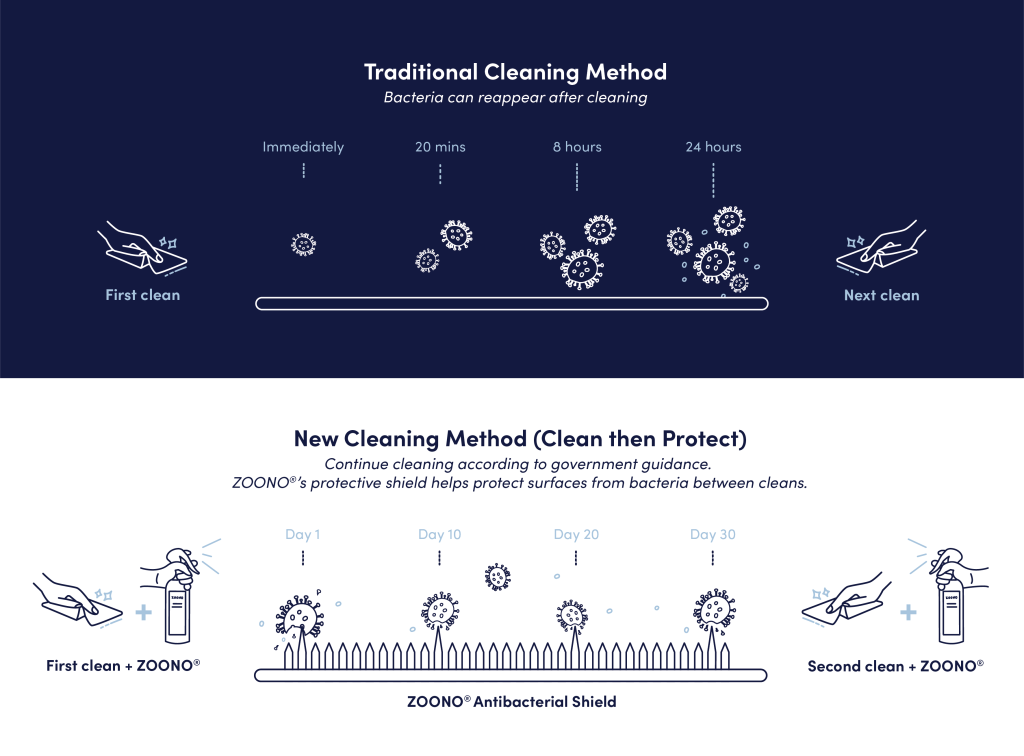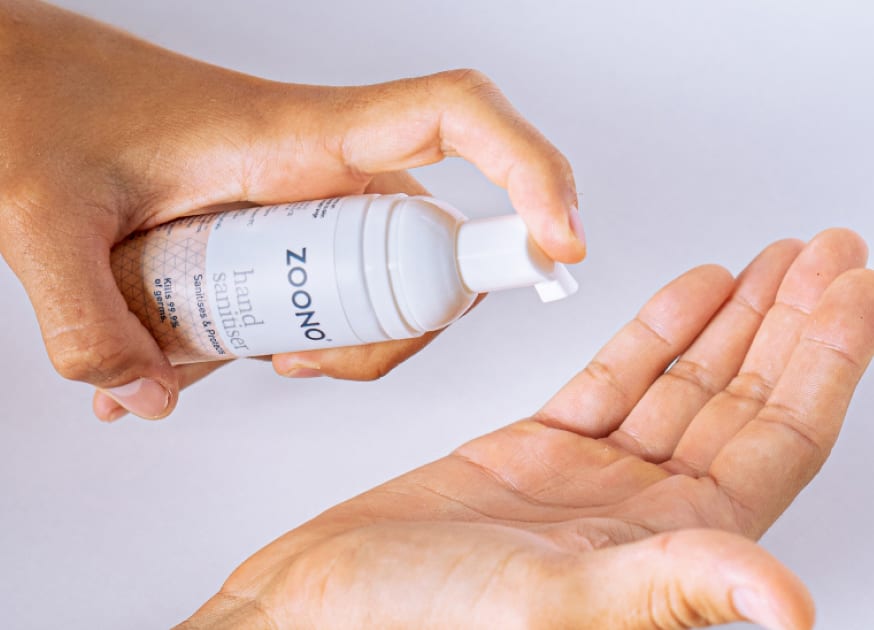Level up from clean and sanitised to antimicrobial protected
28/06/2022 | ZOONO Global
You can clean – and sanitise too, but you can’t beat the long-lasting antibacterial protection of ZOONO. From early childhood centres to classrooms, hospitals and workplaces, a superior level of bacterial protection is critical given the rapid spread of potentially harmful microbes.
So, here we look at the differences between a standard disinfectant product and ZOONO antimicrobial protection.
The problem with standard disinfectant products
When used correctly, standard disinfection products are antimicrobial as they either stop the growth of or kill microbes. However, they are only effective if used correctly – and that may require much longer ‘contact times’ than how they are typically applied. More often than not, disinfectant products are sprayed onto the surface and then immediately wiped with a cloth. The problem is that they should be left on the surface for up to 10 minutes before being wiped off. Furthermore, even when these products are applied correctly, they are typically inactive once dry. So, the surface is open to contamination from microbes that are present in the air (through coughing or sneezing), via touch (hands), or contact with contaminated objects (such as dirty materials, food, or contaminated water).
If that sounds bad, it gets worse. Once a bacterium is present, in the right conditions (with no further cleaning or no antimicrobial coating), each can replicate as quickly as once every 20 minutes (E. coli does this). Run the numbers on that, and the exponential growth in numbers is shocking: a single bacterium can become 8,388,608 bacteria in just eight hours. Trust us, you don’t want to calculate the numbers on bacterium replication between your scheduled cleanings!
Time for some good news. ZOONO® Z-71 Microbe Shield offers wet-phase kill and meets regulatory requirements as a biocide. In addition, the wet phase kill offers a fail-safe upon application of ZOONO® in the instance the standard cleaning protocol has not effectively removed surface contamination. Plus, employing ZOONO® as part of your routine cleaning protocol delivers the additional benefit of an antimicrobial coating.
“With typical cleaning, even if 99.9% of bacteria and viruses are killed, any remaining bacteria can multiply as quickly as every 20 minutes. Imagine what this looks like after 24 hours – one bacterium dividing into millions. An antimicrobial coating will reduce bacterium replication and provide long-lasting protection from germs that come into contact with the surface,” explains Jade Pallett, Chief Technology Officer, ZOONO.
This infographic shows the benefits of utilising an antimicrobial coating as part of the routine cleaning protocol:

Reducing the risk of spread in high touch-point areas
Doorknobs, light switches, handrails, elevator buttons, and keyboards are breeding grounds for bacteria. Multiple touches from many hands present the perfect opportunity to spread microbes from person to person and surface to surface. Thankfully, ZOONO® can help. Once applied, ZOONO® covalently bonds to the surface, providing a long-lasting protective antimicrobial coating that physically ruptures microorganisms – for up to 30 days between cleans. As a result, ZOONO® helps prevent contamination and subsequent growth of microbes on surfaces after cleaning, thus helping to reduce the spread of bacteria.
Why standard disinfection isn’t enough
Standard disinfection products leave surfaces open to contamination (and subsequently the potential multiplication of microbes) once they have dried. Despite all the effort to clean and sanitise, the rapid spread of microbes from person to person and surface to surface puts people at high risk of infection and sickness. By comparison, ZOONO®’s antimicrobial coating mitigates risk from microbes between routine cleaning opportunities and results in a sustained higher level of cleanliness.



LATEST NEWS








